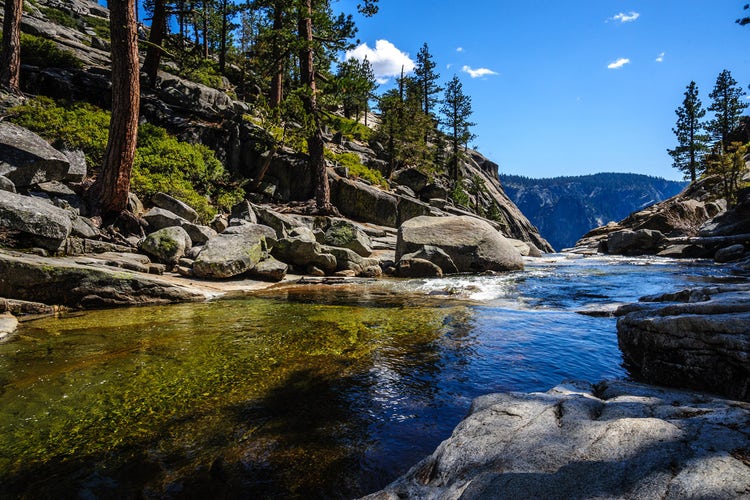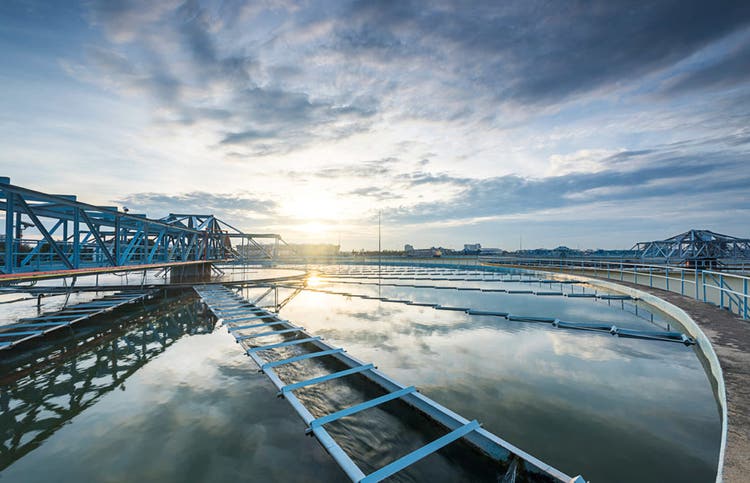How to Make (More) Water? Just Add Wastewater … and Education

Perhaps you’ve seen this video. Bill Gates stands in front of a spigot that’s hooked up to a large machine while someone hands him a clear jam jar of water. Gates downs the glass to a round of applause from an unseen crowd, bobs his head and announces, “It’s water,” to more cheers.
That was November 2014, and the video went viral because people wanted to see the world’s richest man drink water made from solid human waste. Gates himself was more blunt in his own blog post about it, starting with the headline: “This Ingenious Machine Turns Feces Into Drinking Water.”
Two months later, the billionaire philanthropist was on national television challenging Jimmy Fallon to a taste test of the water. There were two pint-size glasses. After some goofing around and predictable jokes—the glasses were numbered 1 and 2, after all—the late-night host did oblige but not without some hesitation.
Fallon’s queasiness mirrors what many of us feel when faced with the prospect of drinking recycled wastewater. We’re conditioned to think of our water coming direct from “fresh sources,” including mountain springs and rivers. Advertising of bottled water backs this up.
Hydration: it’s not just for athletes

The better we’ve come to understand the impact of dehydration on our physical and mental functioning, the more importance we’ve come to place on not just hydration but also the availability of plain, clean water for everyone from children to the elderly. But the fact is, our local water providers are having to get pretty creative in their thinking about drinking water supplies.
The earth is warming, and that’s causing snowpacks—a major source of naturally stored water in places from the Western United States to the Himalayas in Asia—to shrink. Climate change is bringing about extreme heat and prolonged droughts the world over. Urban areas are growing in population. All these factors are depleting traditional water sources—surface and groundwater.
Just last year, Cape Town, South Africa, almost became the first major city in modern times to run out of fresh drinking water. Here at home, East Porterville, California, actually did run out of water.
Water managers across the parched Western United States have already worked with their communities to wring out every last drop through conservation, yet it’s not enough. “We live in a desert and get 9 inches of rain a year. So we need to be smart,” says Christina Montoya-Halter, communications and marketing manager with El Paso Water.
That’s why El Paso, Texas, has already turned to recycled wastewater to augment its drinking water supplies, joining other municipalities like Orange County, California, to educate community members and help them embrace this new source.
All the water we can and cannot see

Across much of the developed world, most drinking water supplies come from surface and groundwater. With projections of vast urban growth over the next several decades—an increase in urban dwelling by 2.6 billion by 2050, according to the United Nations Development Programme—groundwater and surface water supplies will struggle to keep up with demand, according to a 2014 global study. That means some of the world’s fastest growing cities will be in danger of running out of water unless they diversify their supply.
Here in the U.S., water is shared across regions—not always amicably. Georgia, Florida and Alabama await a court decision in a dispute over the level of flowsfrom the Apalachicola-Chattahoochee-Flint River Basin. The parties to the Colorado River Compact—Arizona, California, Colorado, Nevada, New Mexico, Utah and Wyoming—just this year agreed to reduce their use of the river’s lower basin, fed by Lake Mead via the Hoover Dam.
These sharing agreements and the vast dam and aqueduct systems they wrought were forged decades ago—nearly 100 years ago in the case of the Colorado River Compact—when populations and use were at much lower levels and temperatures were not as high and the climate not as dry as has happened in the modern era.
El Paso stands as a model of efficient water use—and reuse—but it wasn’t always so.
In the 1980s, the desert community was one of the fastest growing cities in the U.S. The average water use by each El Pasoan in 1985 was 205 gallons a day, more than twice the national average use in the U.S. of 80 to 100 gallons per day.
El Paso pumped much of its water from the Rio Grande and two shared aquifers: One was shared with New Mexico—over which there was a legal dispute—and the other aquifer, the Hueco Bolson, was shared with Juarez, Mexico. At the rate at which El Paso and Juarez were using Hueco Bolson, the aquifer was projected to be pumped dry by 2025.
Water managers pushed conservation. In 1991, El Paso Water launched a major initiative of mandatory rationing (set days for watering lawns, car washing), fines for those violating watering laws, price hikes for major water users and incentives for people to replace lawns with rock gardens. These tactics worked for El Paso as residents dropped their daily use to 128 gallons by 2017.
El Paso looked to desalinate brackish water in the Hueco aquifer. (Most aquifers have a larger layer of brackish salt water under a thin layer of freshwater.) The plant—the largest inland desalination plant in the world—has been operating since 2007.
Still, this all wasn’t enough. What more could El Paso (or any place) do?
The race to wring water out of waste
While some states continue to fight over water, others are elbowing past each other to be the first to recycle the most water.
El Paso and Orange County have been using wastewater as an indirect source for drinking water for years. Both communities boast about their reuse. El Paso claims it’s among those that’s been recycling the longest (since the late 1980s), while Orange County likes to talk about its facility as the biggest in the world that produces the most recycled water (100 million gallons a day).
These projects are what’s called indirect potable reuse. In plain English, this means wastewater gets treated at the sewage treatment plant, piped over to the water treatment plant for further purification, and then injected into aquifers where it stays for a number of months before it filters into the groundwater, which becomes part of the drinking water supply.
Orange County’s system uses pre-purification at the waste treatment plant and then sends water for microfiltration, reverse osmosis and ultraviolet treatment before it goes to sit in the buffer before filtering into the aquifer.
Getting recycled water into the mix of drinking water took a lot of public outreach. Mehul Patel, executive director of operations for the Orange County Water District, tells 24Life that he spent roughly 10 years—starting in 1997—giving presentations to civic groups, medical organizations and regulators about the technology and the results it produced. It was worth it.
“Other projects in the late 1990s got defeated through negative public perception. Ours was the first not to have negative organized perception,” Patel says.
That negative public perception is known loosely as the “yuck” factor, and water managers all agree that education and outreach will be key, particularly as places like El Paso move to the next frontier: toilet to tap. Montoya-Halter says it’s not a big deal for El Paso’s customers: “We’ve always used ground, purple pipe (recycled) and desalinated … this is just another source to rely on.”
El Paso Water finished a yearlong pilot project of its advanced water purification facility in 2016, which it’s hoping to bring online in the next few years. It will use a lot of the same technology Orange County Water uses at its facility.

Getting regulations to catch up

To get to what El Paso Water calls pipe to pipe, the facility will need to finish its design process and then work with state regulators to gain approval for use. They are confident in the technology. Montoya-Halter notes that the pilot testing involved thousands of samples, which state regulators and scientists analyzed and tested and ultimately gave glowing reviews. They need regulations to catch up.
“In Texas, there is no state standard that’s black and white—no standards for water reuse facilities,” Montoya-Halter explains.
Instead, the state works with individual processes on a case-by-case basis. Orange County’s Patel says that California did the same until it did get some regulations in place for recycled water use in 2014. Still, no entity in California can send wastewater directly into drinking water supplies. California’s water regulators have written up a framework for legislation. But Patel says he doesn’t expect it before 2023.
In the meantime, Orange County Water does have a permit to bottle some of its recycled water, which it calls direct potable reuse. Patel and others will be taking it to civic groups, college groups, legislators, other water districts in California and other states to sell them on this source of recycled water. If they’re successful, Patel notes they’ll get more users. “That’ll drive down the cost of implementation and help out other areas in the state,” he says.
The path to clean water has taken some unexpected turns, and before the race to recover water becomes a sprint, perhaps Jimmy Fallon and Bill Gates can be available for a taste test.
Read more about people and initiatives dedicated to the health of our planet, here.
Video credit: slavemotion, Getty Images
Photo credit: DurkTalsma, Getty Images; adamkaz, Getty Images; naumoid, Getty Images; tuachanwatthana, Getty Images; Bluberries, Getty Images